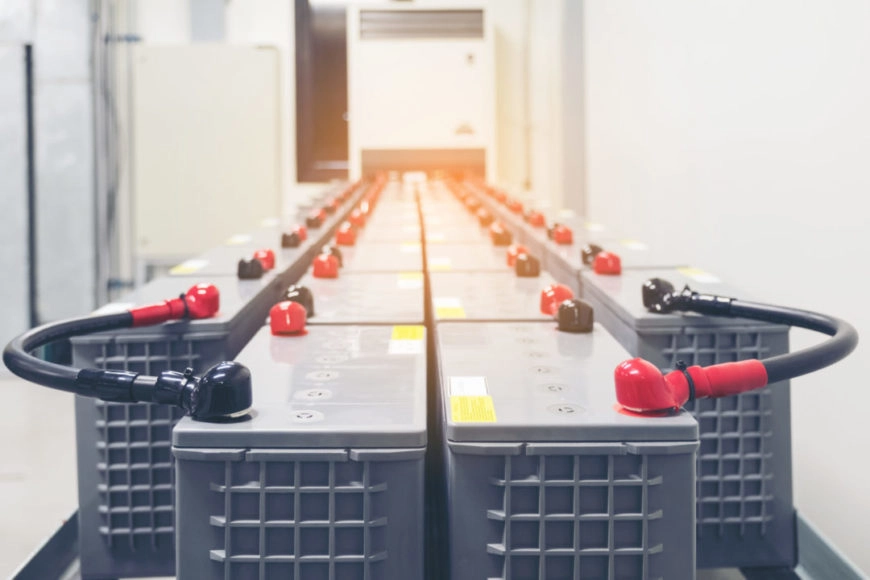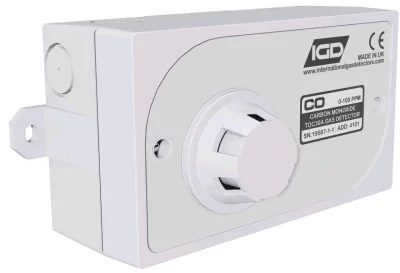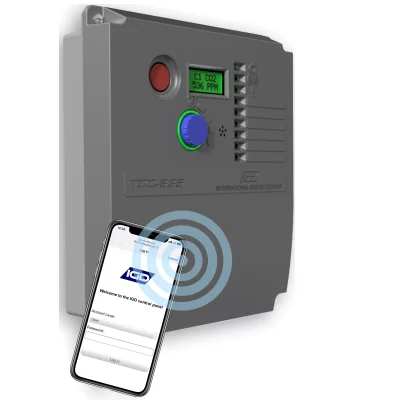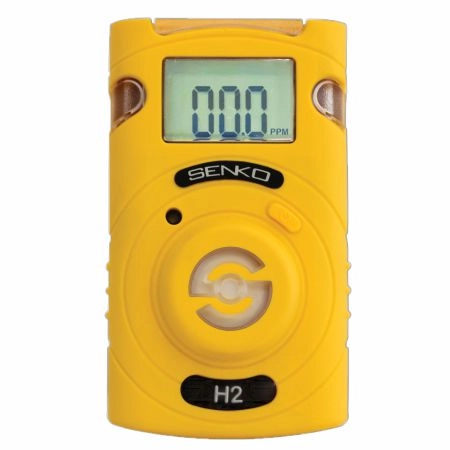It is well established that hydrogen frequently occurs as a by-product when charging lead-acid batteries. This article will explain why battery stores must have a hydrogen gas detector present and provide examples of International Gas Detectors hydrogen gas detector solutions.

Image Credit: International Gas Detectors Ltd
It is common for both commercial and industrial premises to possess battery backup facilities to offer short term backup power in the event of power failure to the building. These applications can vary from data centers, process/manufacturing applications, emergency care units, universities, banking, and stock exchanges, among others. Ordinarily, the battery backup facility employs lead-acid batteries, which are constantly charged in a storeroom. They are a great solution to ensure crucial systems are kept running without needing expensive generators.
Despite this, a key issue with lead-acid batteries is their production of hydrogen gas, which is explosive at 4% by volume in air. For this reason, it is necessary to employ a hydrogen gas detector.
Hydrogen Gas Detector for Continuous Monitoring
Because the lead-acid batteries will emit minute quantities of hydrogen as a by-product of their charging cycle, it is crucial to monitor the area employing a hydrogen gas detector. Hydrogen is explosive at 4% by volume in air and battery storage areas are usually in confined areas. If a leak is not detected, an explosive atmosphere can easily be generated.
It is vital to express that even if there is ventilation in the room, this cannot be solely relied upon. Additionally, because hydrogen is lighter than air gas, if any leak occurs, the gas rises and accumulates into the highest area of the room/storage facility. A hydrogen gas detector is a key resolution for this application for the following reasons.
Firstly, ventilation should never be relied upon solely to ensure an area is safe from gas leaks. With all risk assessments, there is a safety gap, which in this instance is what would happen if the ventilation failed, and would this be apparent?
Additionally, if the gas is not being measured for, it is unclear whether or not it is present. A hydrogen gas detector would constantly examine the environment for any increasing hydrogen levels and additionally can commence ventilation when necessary. The hydrogen gas detector would also notify trained personnel of the increasing gas leaks prior to them becoming dangerous or explosive.
Another reason that a hydrogen gas detector is a key solution is that when working with possible gas leaks, either explosive, inert, or toxic, it is always pertinent to install a fixed gas detector, as these offer 24/7 constant monitoring. In the instance of a battery storage area, these are frequently unmanned areas meaning they are often where an accident may take place. The hydrogen gas detector would offer 24/7 continuous detection and can provide remote alarms via text, email, or to a site BMS about any increase in hydrogen levels.
IGD Hydrogen Gas Detector Solutions
As a producer of gas detection equipment, IGD provides a variety of hydrogen gas detector devices to work with individual site needs. Because the majority of battery charging and storage facilities do not need explosion-proof detectors (ATEX), the IGD 750 series safe area detector is the perfect resolution.
If batteries are charging accurately, then the majority of battery technologies are recombining the hydrogen internally. However, as a battery degrades or the charging cycle is not running optimally, the battery will begin to liberate more hydrogen than necessary (note all lead-acid batteries free hydrogen to some level).
As such, if lower ppm levels are being monitored, for instance, the 0-4000 ppm (10% LEL) hydrogen gas detector, the lower detection can be used to observe two things. Firstly, if there is a build-up of hydrogen taking place, the sensor can begin/increase the ventilation sooner. Additionally, notifying personnel that there is an issue with the battery or charging cycle. Therefore, problems can be spotted prior to becoming a problem.

TOC-750 safe area addressable gas detector. Image Credit: International Gas Detectors Ltd
In addition, the 750 series safe area hydrogen gas detector can be fitted installed using a remote calibration port. As hydrogen is far lighter than air, the sensor must be positioned on the ceiling or alcoves where the gas will accumulate. The remote gassing port permits engineers to calibrate the sensors easily without needing to work at height access.
Lastly, IGD’s 635 small format control panel is the perfect controller for such applications. Many charging and storage facilities for batteries are small or confined units that only require a small number of detectors. The 635 can have as many as 32, 750 safe area detectors interconnected on a single 2-Core cable highway.
The 635 also includes inbuilt audible visual alarms and an illuminated jog wheel for system status which can be observed quickly. It is simple to install, with self-setup and one of the best-priced solutions on the market, which provides increased versatility and data in comparison to a traditional 4-20 mA analog and older addressable systems.

TOCSIN 635 gas detection control panel using built-in wifi module for calibration and service reports. Image Credit: International Gas Detectors Ltd
What About Portable Units?
Engineers or ventilation service engineers visiting sites should consider investing in a portable hydrogen gas detector. This is particularly helpful for engineers visiting multiple battery storage/charging facilities, as the site possessing a functioning or properly calibrated hydrogen gas detector system cannot be relied upon. The portable offers a final line of defense for a possible hydrogen gas leak.
A portable hydrogen gas detector is additionally beneficial for site personnel if employed in combination with a fixed system, as this enables teams to examine hydrogen gas leaks that have been reported from the fixed hydrogen detector. This can also be used as alarm verification. The SENKO SGT-P Hydrogen gas detector is the ideal resolution.

SGT-P single gas hydrogen gas detector for personal protection. Image Credit: International Gas Detectors Ltd

This information has been sourced, reviewed and adapted from materials provided by International Gas Detectors Ltd.
For more information on this source, please visit International Gas Detectors Ltd.